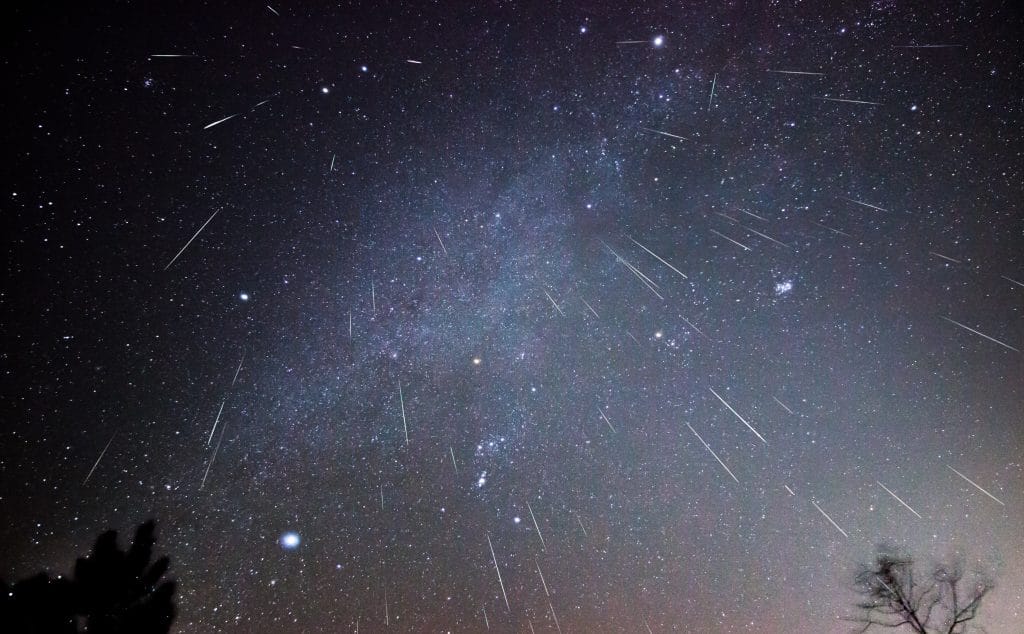
Be sure to look up this month.
If there’s anything positive to take from this tumultuous year it’s the number of astronomical spectacles we’ve been treated to. With all the magic light shows that winter brings, it’s easy to forget that the sky provides some stunning celestial light shows of its own.
Aspiring astronomers will know that the blazing fireballs of the Leonid Meteor Shower last month were only a warm-up to an even more incredible meteor shower every December.
According to The Old Farmer’s Almanac, we’re in for three astounding astronomical events this December. Two of these will be visible from Illinois and luckily for us, the stars have aligned to make conditions some of the best to date.
Geminid Meteor Shower
The first of these is the most active and reliable shower of the year – the Geminid Meteor Shower. The annual shower occurs from around December 4 until December 16 and tends to favor Earth’s Northern Hemisphere. This year it is expected to peak after nightfall on Sunday, December 13, and into dawn on Monday, December 14, with the optimum time to look to the skies said to be around 2 am. It’s during these hours that the skies are darkest and the maximum amount of meteors fall per hour.
The Geminid Meteor Shower, named after the constellation Gemini, is comprised of debris from Asteroid 3200 Phaethon. The asteroid is renowned for its quantity of debris and the prismatic meteors it produces. This year astronomers have predicted that the Geminids will bring up to 150 visible meteors per hour and luckily, with a New Moon expected around December 14th, the extra-dark skies will help illuminate the stars and meteors.
As with any meteor shower, the best place they are seen is as far away from cities where pollution and artificial lights limit visibility. This is tricky given the current circumstances and the cold weather but if you can get out of urban areas, you’re in for a real treat! The meteors can appear anywhere in the sky, so though it’s tempting to use binoculars or a telescope, it’s best to just peer up at the open sky and avoid using phones or screens so your eyes can better adjust.
For photographers out there. According to NASA, your best bet is to use a camera with manual focus on a tripod with a shutter release cable or built-in timer, fitted with a wide-angle lens.
The Gas Giant’s ‘Great Conjunction’
The second great astronomical event of the month is the “great conjunction” when the two gas giants, Jupiter and Saturn, align. The two planets will come together on Monday, December 21, and shine brightly as a “double planet.” The orbits of Earth, Jupiter, and Saturn cause this phenomenon to happen once every 20 years, but to find the last time the planets were this close together in the night sky you’ll have to look all the way back to 1623.
Unfortunately, the third extraordinary spectacle of the month is a total solar eclipse that will darken skies in South America on December 14 but will not be visible from the United States.
[Featured image from Shuttershock]
